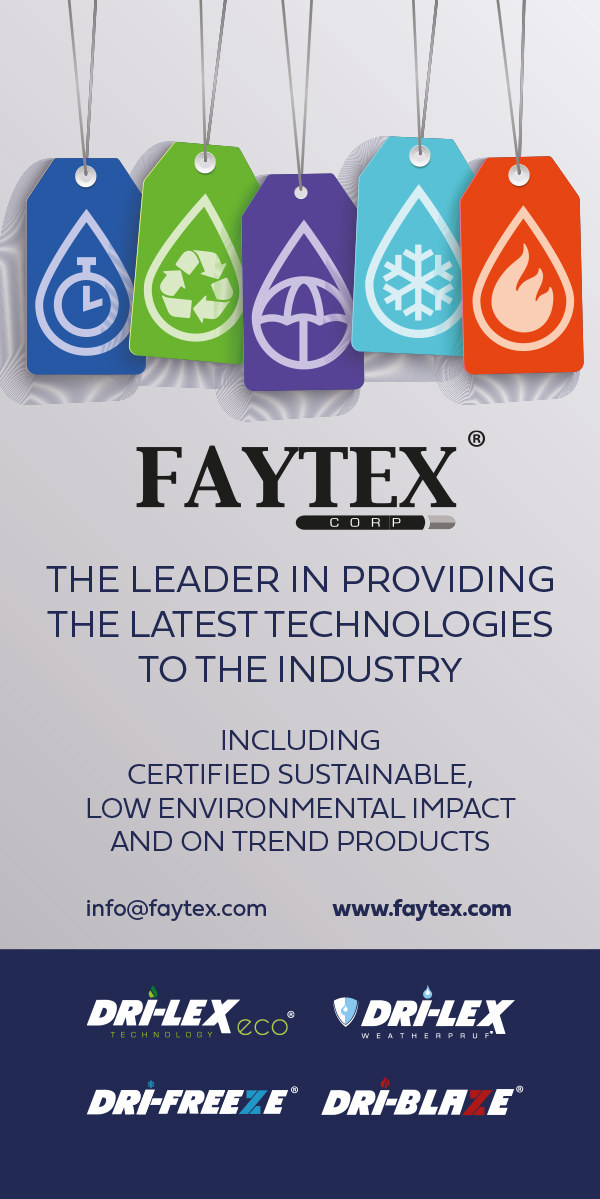A solution for a sticky problem

Advances in adhesive technology are opening up new possibilities for recycling athletic shoes.
The push towards circularity involves almost all brands, all products and all materials, but each faces its own specific challenges. One that applies to footwear more than to apparel, for example, is the extensive use of adhesive in shoe construction. For recyclers, this complicates the necessary separation of materials at end of life.
As part of a recent Black Friday campaign, sustainability-focused shoe brand Vivobarefoot said that 90% of the footwear produced each year worldwide will end up in landfill, much of it within 12 months of being purchased. This means consumers are discarding billions of pairs each year, with the complex material mix in many of the products contributing to lengthy biodegradability times.
Sports shoes in particular often have a complex mix of fibres and fabrics in their composition, taking into account uppers, midsole, outer soles and other components. As well as making these products difficult to recycle, the diverse materials can be difficult to bond in the first place. Adhesives manufacturers such as Henkel insist that flexible adhesives are often the best option for shoe manufacturing because of their high workability and high productivity. But Henkel admits that this comes at a price. “The environmental concerns about the adhesives used by sports and running shoe manufacturers have also become more complex and acute,” the company says. Its portfolio for shoes includes polyurethane hot melt and quick-drying cyanoacrylate adhesives.
First tasks
The ability of these adhesives to bond layers of rubber, polyester, thermoplastic polyurethane, ethylene-vinyl acetate and other materials to one another is what makes footwear hard work for recycling specialists, for whom separating out the different fibres in any product is always one of the first tasks.
Attempts at circumventing this hurdle have led creative companies like Clarks, with its Origin collection in 2021, and Nike, with the ISPA Link Axis launch in 2023, to create glue-free shoes, with recyclability and circularity in mind.
Glue-free shoes
Origin shoes were made for easy disassembly at end of life. Five pieces made up each shoe, with recycled content in the sole and the laces. Other pro-recycling components were mono-material nylon thread for the stitching. Clarks acknowledged from the outset that the inclusion of glue in shoe construction is what makes footwear difficult to recycle and said this was why it made the Origin collection glue-free. Clarks has confirmed to World Footwear that this collection is no longer commercially available.
Nike’s more recent ISPA Link Axis collection is still available at the time of writing. In the sports brand’s announcements about the Link Axis, it emphasised the shoe’s recyclability. It said: “A good shoe is flexible and durable. Designers use glue and other bonding elements to achieve these aims, but that makes a shoe nearly impossible to disassemble and recycle. Every part of the Link Axis can be recycled. The design uses interlocking components, as few materials as possible and zero-glue.”
Stuck in reverse
These examples are the exception rather than the rule. Almost all shoes do still have glue, but in spite of this there are other avenues along which the footwear industry can move towards circularity. If glue is going to continue to be an important part of the construction of most footwear, it is a good thing that innovative people are now working hard to improve adhesive technology to make it more recycling-friendly. One clever idea that has come to light in 2024 is that of so-called reversible glues, adhesives that bond effectively for as long as a product is in use, and then stop working when you want them to. In this way, the separation of the fibres and fabrics in a shoe will become much easier.
Earlier this year, Dr Barny Greenland, an academic at the University of Sussex with a specialist interest in developing responsive polymeric and supramolecular materials, spoke to the BBC about adhesives that debond on demand. He describes the ideal outcome as a glue that will work well for as long as we want it to, but stop working “at the flick of a switch”.
He explains that the concept is all around us, as anyone who has had to remove old wallpaper from the wall of a room in their house will readily recognise. Paste that has kept the paper attached to the wall for decades will unstick quite easily if you apply the right amount of heat and the right amount of moisture, Dr Greenland explains. Moving from interior decoration back to shoes, though, generating the right amounts of heat and moisture to glue can be problematic, not least because shoes bonded with adhesives that respond in this way could function poorly in a hot and humid climate. Athletic footwear is a global market, after all.
Control mechanism
This has led Dr Greenland and his team to search for “more controlled” ways to achieve the reversibility of adhesives. An early idea that the University of Sussex team investigated was a glue that “responds to a specific chemical”. A shoe with a leather upper and a rubber sole is one of the applications the academic mentions in connection with this. At end of life, you can immerse the shoe in a liquid containing the specific chemical. “The glue will break down and you will be able to recycle the leather in one stream and the sole of the shoe in another,” he says.
There are practical challenges with this, though. How big would the tank need to be to treat a whole batch of discarded shoes? What effect might the chemicals have on the materials you are trying to reclaim for reuse?
Inspired, curiously, by kitchen appliances, the team has come up with an idea that offers a much more controlled way of triggering an end to the glue’s stickiness while avoiding any degradation of potentially important recycled raw materials. An induction hob will put heat directly into the base of a metal saucepan, while the hob itself stays cool. “We thought we might be able to use this idea as a way of transferring energy into glue,” says Dr Greenland. “This means heating up the glue, but not the materials surrounding it. The way that you can do this is by adding very small particles of iron or iron oxide into your glue and then sticking the surfaces together. You will later be able to unstick objects, even when you cannot get to the surface with the glue. A magnetic field will pass through the object and interact only with the glue. You can heat up the glue and de-bond your object.” He says this principle is not dependent on special new glues; any thermo-responsive adhesive will work in the same way.
Ready to be remade
By coincidence, in the same week in which the BBC broadcast these comments from Barny Greenland, athletic footwear brand ASICS, on the other side of the world, announced the Nimbus Mirai. The Japanese company described its new product as the most advanced shoe it has ever made. It wants runners to buy the shoes, use them extensively and then return them to the company at end of life so that the materials in their construction can be made into new products. Therefore, even at end of life, the product will have a future; the name Mirai means ‘future’ in Japanese.
Its construction comprises a uniform polyester material and the upper has no overlays. Unlike in the Clarks and Nike examples, glue comes into this story, too. ASICS has used “a special type of adhesive”, created in-house, to provide durable bonds while the shoe is in use. But this adhesive is reversible, so it also makes the upper easily detachable from the sole during recycling processes. The whole of the upper will go through recycling, ASICS has confirmed, and be retrieved as a new polyester material, “ready to be remade to run again”.
Designing for circularity means knowing, before you make anything, how it can be unmade and remade at end of life. Reversible glues are on course to be an important part of designing shoes and other products for the circular economy, Dr Greenland insists, because they will make it much easier for brands to build collections that are easy to take apart again when the time is right.
A special type of adhesive that ASICS has developed in house bonds together the materials that make up the Nimbus Mirai, but only until the shoes reach end of life.
CREDIT: ASICS












